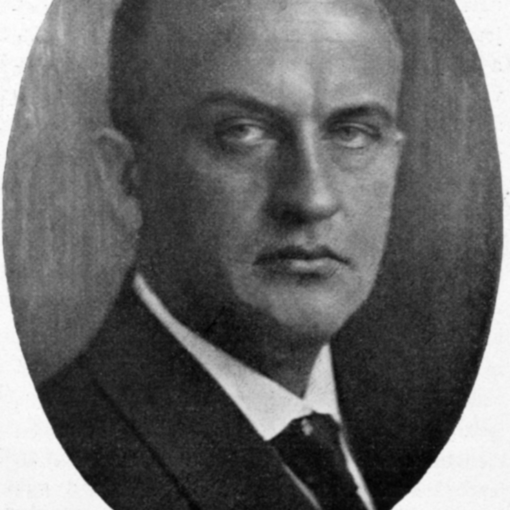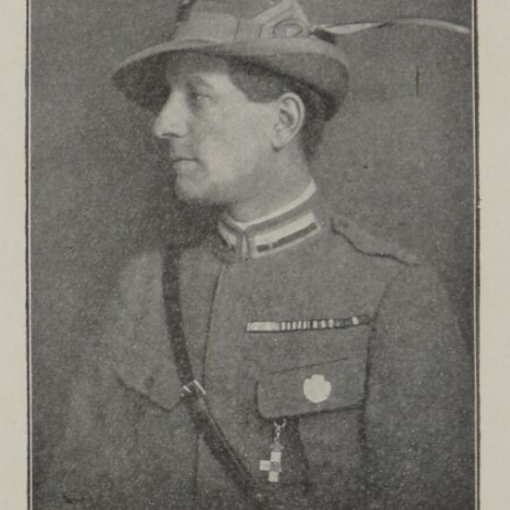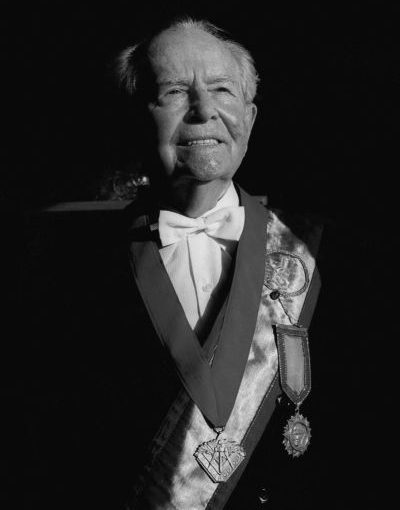University professor František Nušl was born on 3 December 1867 in Jindřichův Hradec. After graduating from the local grammar school, he studied mathematics, physics and astronomy at Charles University in Prague. He then taught mathematics and physics in Hradec Králové and Prague. František Nušl was the founder of the Ondřejov Observatory together with Josef Jan Frič and later he was also its first director.

In 1904, he received his habilitation at Charles University in astronomy, and in 1908 he became a professor of mathematics at the Czech Technical University in Prague. In 1922, he was appointed director of the State Observatory in Prague and chairman of the Czech Astronomical Society. In 1928, he also became a professor of astronomy at Charles University. He is one of the leading founders of the Národ Lodge with Brethren such as the physician Ladislav Syllaba, lawyers Jan Kapras and Emil Svoboda, poet Viktor Dyk, sculptor Jindřich Čapek, Jan Dvořáček, clerk and editor Jan Ventura, librarian Jan Thon and geographer Viktor Dvorský. He was incorporated into the Národ Lodge right at its founding, i.e. on 28 March 1919, in the charter under an extremely low number – No. 16. He is among those who bring their sons into Freemasonry as he brings his son Jan Nušl. In 1921, he also became a member of the Grand Council of the National Grand Lodge of Czechoslovakia. During his time at the Czech Technical University, an informal society “Lascivia zu den Drei Stamperln” was formed, which evolved from the gentlemen’s parties at Professor František Kadeřávek’s house, where famous Brethren came to ‘gossip’. František Kadeřávek recalls: ‘We used to sit in my office on the second floor of the technology on Karlovo náměstí (the Charles Square), and then I had to move Lascivia to the collections rooms behind the large drawing room next to the Black Brewery, as the number of visitors increased to an unsuspected extent. Brother Thein and Brother Tichý, Jaroušek Kvapilů, Červinka Vincenc and Constant Pierre began to come … and Figulus, Comenius’ grandson, also came. I think Bernášek brought him. Perhaps Gintl came then too, but Chytil and Reinhart moved in, and so did the whole Democratic Centre group. Sum was an avid visitor, both Nušls, Motyčka, Danko, Andriál, Brož, Juda. Rudolf Kadeřávek, Holub, Havel, Hartvich, Hejman, Moravec, Svoboda Eman, Hofmeister, Lang ran auxiliary services, and Vilém Dvořák took care of that there was not a second of silence.’
In 1929, he joined the search and purchase of a new Temple, with the spring of 1929 proving to be the turning point, when finally some Prague Masons decided to take action. Then in May, a limited liability company was formed, which applied to buy an extremely strategic plot of land in Klárovo on Mala Strana. A new Masonic stand, the Komenský Memorial, was to be built there. The request for the purchase of the land addressed to the town council, was signed by Jaroslav Kvapil, Václav M. Havel, František Kadeřávek, Ladislav Machoň, František Nušl, Rudolf Pilát, Vladimír Rott, Jiří Sedmík, Václav Stieber, Emil Svoboda, Josef Volf and Rudolf J. Vonka. Many other representatives of all lodges, even those outside Prague, also signed it because the location of the highest Masonic bodies concerned them as well. But, as it sometimes happens, the plan failed to materialize.
František Nušl devised an instrument to observe the transit times of stars through the almucantar (i.e. a circle of equal angular distance from the zenith), and from these observations, the longitude and latitude are determined simultaneously. The idea was quite simple: a star is exactly on the local meridian when its direct image coincides with its reflection in a mercury mirror. A mercury mirror, calmer and more sensitive than, say, a water mirror, provides an absolute horizon, and the simultaneous viewing of both images is made possible by semi-transparent prisms. The Circumzenithal was further improved by Nušl’s followers and was later used extensively, e.g. in international projects to monitor the Earth’s rotation. The last model, developed in 1967 at the Research Institute of Geodesy, Cartography and Topography, was also a commercial success: several dozen examples were successfully exported abroad.
Bro. František Nušl was an exemplary Mason, he was always at the centre of Masonic activities, even though he was busy with his highly professional activities at the faculty, in professional publications, as director of the observatory and president of the Czechoslovak Astronomical Society. He died on 17 September 1951. Today, the observatory in Jindřichův Hradec is named after him.
The Nušl Prize of the Czech Astronomical Society (CAS) is the highest award given by the CAS to researchers who have made a special contribution to the development of astronomy through their life’s work.
Luboš T.



